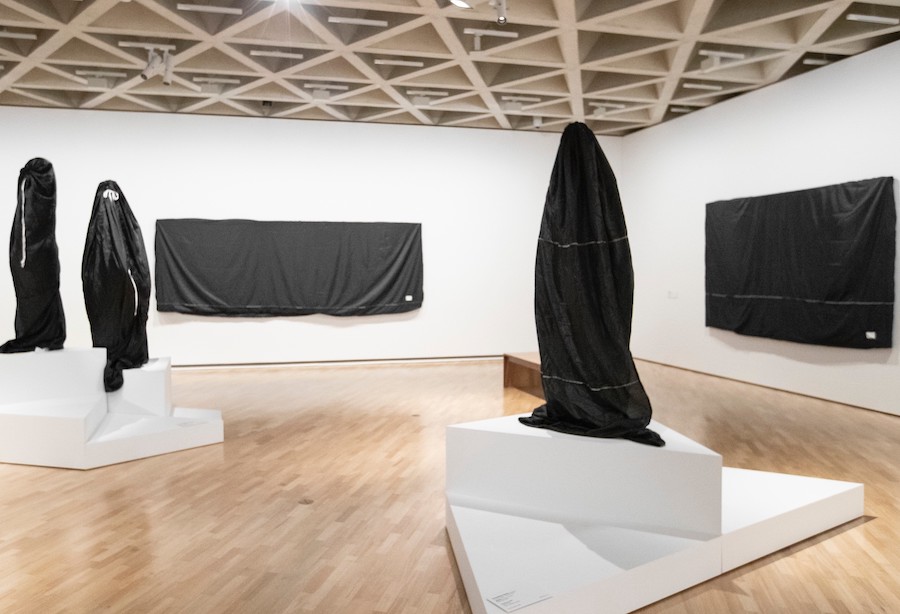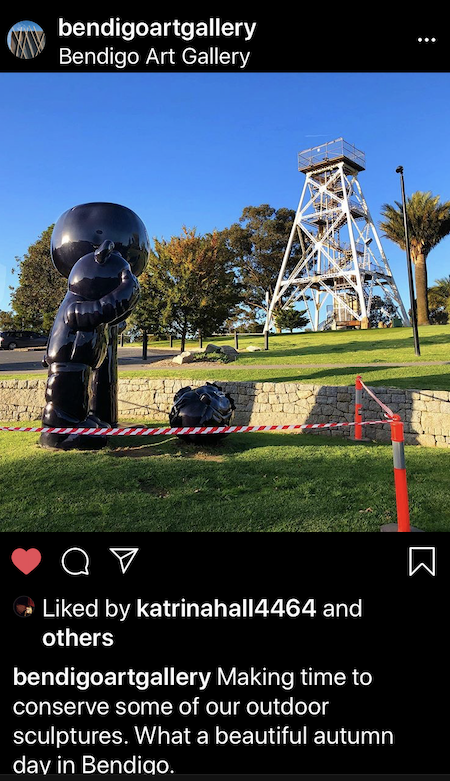While some museums and galleries have thrown their resources into pivoting online and digital offerings, others have used this time to take stock, clean up and conserve.
In the pace of museum life, the list of “things to do” is long and lingering. Cleaning out the store room, going through the archive, conserving art works, digitising a collection – they are all the great jobs we want to do but never have time for.
Some arts organisations have opted to turn their attention to these tasks during COVID-19, rather than trying to make the digital leap in an over-crowded environment.
As Natasha Bullock, Assistant Director, Curatorial and Programs at the National Gallery of Australia said: ‘For our conservators and curators, who are still onsite, the unprecedented shutdown due to COVID-19 has presented a rare opportunity to restore and research some of the Gallery’s iconic works of art.’
One of the first jobs conservators did at the NGA was to “cloak” the artworks to protect them from UV and dust during this period, to ensure their exhibition life when the doors reopen.
 Various works from NGA’s International Galleries covered as COVID-19 shuts Gallery doors to public. Image supplied.
Various works from NGA’s International Galleries covered as COVID-19 shuts Gallery doors to public. Image supplied.
For Jessica Bridgfoot, Director of Bendigo Art Gallery, the closures have offered the opportunity for her staff to tackle maintenance as well as conservation projects.
‘We took the time to do some conservation work on our historic buildings – projects that can’t be done easily with the public [present], as we are usually open seven days a week. This included basic things like painting but also some complex endeavours such as cleaning our 19th Century skylights, which involves a scissors-lift, harnesses, taking down all the artworks in the gallery,’ Bridgfoot told ArtsHub.
‘We have also had some collection works conserved at a laboratory – works that have never been on display, such as the flamboyant and fantastical, Britannia Rules the Waves (pictured top), as well as creating archival storage solutions for our collection of thousands of decorative arts and contemporary ceramics. This involves detailed construction of archival boxes and custom mounts,’ she continued.

Bridgfoot said that the schedule of conservation works was in part a way to keep their collections and technical crew working: ‘We have such a constant turnover of exhibitions that the collection does not always get the attention it deserves; we’re using this time to make amends!’
At the National Museum of Australia (NMA), Senior Curator Cheryl Crilly, Textile Conservator Michelle Newton-Edwards and Paper and Textile Conservator Kerryn Wagg are using the lockdown period to conduct deeper research on the Museum’s oldest dress, dating back some 300 years.
Part of the Springfield-Faithful Family Collection, the dress is believed to have been made in the 1700s. Through the generosity of donors via the Museum’s 2019 Annual Appeal, money was raised for its conservation and display. However, work in the lab was cut short with COVID shutdowns.

Talking about the conservation of the dress on NMA’s blog, Crilly said, ‘the COVID-19 restrictions mean much of the hands-on conservation work has been postponed, as staff are no longer able to access the conservation labs,’ adding that the moment rather has presented, ‘a rare window of opportunity to get on with some really interesting research.’
From home, Newton-Edwards is working on condition reports on new areas where the dress needs conservation work, and fabricating the underpinnings needed to display the gown.
Crilly said the additional time also provides a wonderful opportunity to connect online with people who can provide further insight into the dress: the family and historians who can describe what life would have been like when the dress came to Australia.
NMA is documenting the process and allowing the narrative to unfold online. The work done during closure will mean that when the team returns to the conservation lab, they will be equipped with new knowledge to finish the job.
SHARING LESSONS IN LOCKDOWN
Tapping into this need across the sector, Australian Museums and Galleries Association Victoria (AMaGA) presented a webinar: Caring for Collections during Closure, led by Grimwade Conservation Services and Margaret Birtley AM.
Sarah Morris, AMaGA VIC Executive Director told ArtsHub: ‘The webinar had great participation with 130 attendees, representing every Australian state and territory, and New Zealand. It is rare that the entire sector requires the same training at the time, and so it’s great to be able to offer timely, responsive resources.’
Morris continued: ‘Naturally, COVID-19 brings about anxieties in both a personal and professional sense, so to provide reassurance and information from an expert team of conservators was really valuable to participants. Its purpose was to promote how those responsible for collections can take the best possible care, with limited access – whilst continuing to prioritise health and safety.’
You can still view the webinar online via AMaGA. Further valuable resources and practical tips are provided by the Australian Institute for the Conservation of Cultural Material’s (AICCM), through their Closed by COVID resource.
Internationally, the ICOM Committee for Conservation, has compiled a series of recommendations on how to deal with conservation during the COVID -19 emergency.
Morris’ firm advice for collection care during these times is: ‘Quarantine is the most efficient method to maintain hygiene for new acquisitions or incoming loans and returning collection items. Never attempt to disinfect an item unless under guidance of a conservator.’
She added: ‘Whilst there are definitely more opportunities to reach wider audiences online, museums and galleries should also be reflecting on their mission. For some, without the resources to produce alternative online programming, this time can be utilised to undertake important collection management work and digitisation, and to review collection policies and emergency procedures. It is also valuable time to invest in research and the development of future programming and engagement opportunities, in preparation for reopening.’
CHALLENGES AND OBSERVATIONS
Access is clearly a challenge for any gallery or museum in shutdown. Bridgfoot added that some of the challenges for conservation projects in closure are transport and supplies.
‘Transport has been a challenge as some of the specialist art moving companies closed. We had to pause our archival storage project for a moment waiting on supplies as our usual suppliers were delayed on international shipments, so some specialist materials were nigh impossible to get,’ said Bridgfoot.
‘The social distancing aspect has meant that when we do receive conservators on site we need to give them clear and unabated access, which can be tricky as art handling is generally a multi person job.’
At the Art Gallery of NSW they are combining conservation with the pivot towards digital opportunities .
This week AGNSW launched Together in Art Slow TV experience on YouTube, allowing viewers to watch senior conservator Simon Ives cleaning Arthur Streeton’s The Gloucester Buckets, a work from 1894 that needs expert treatment before going on display in the Gallery’s upcoming Streeton exhibition.
Together in Art Slow TV kicks off with a visit to AGNSW conservation lab.
The gallery said: ‘All of the staff at the Gallery have a not-so-secret wish to stand at the shoulders of our conservator colleagues at work, and watch as they painstakingly dab, scrape, clean and repair the precious art in our collection. Together In Art allows anyone to be a fly-on-the-wall and get a peek into the heart of the conservation process – no before-and-after; no big reveal, but a meditative glimpse into method, patience, and meticulous care.’
Viewers can tune in to watch Simon cleaning the Streeton work every Thursday at 2–4pm for four weeks from today.




